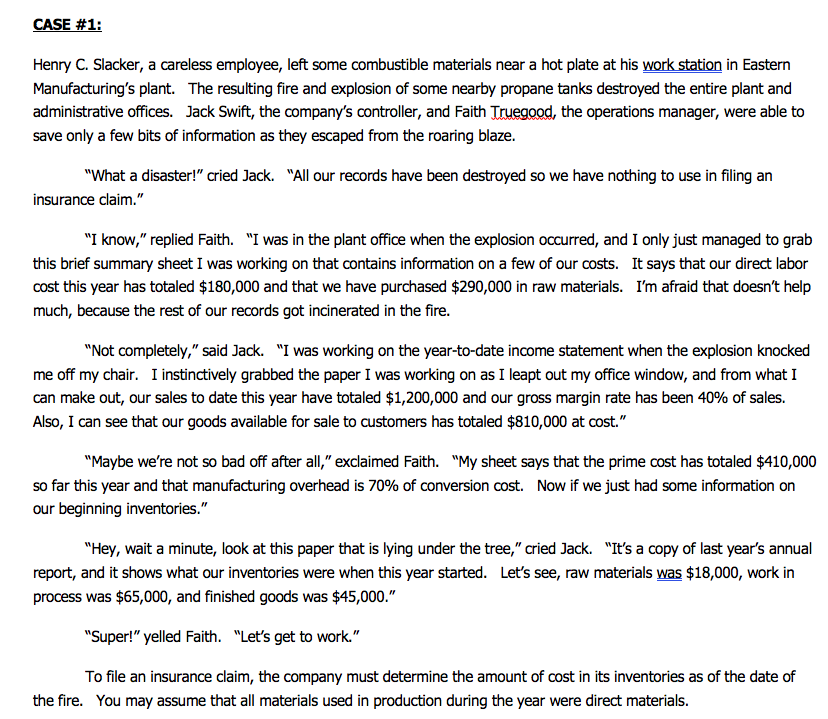

CASE #1: Henry C. Slacker, a careless employee, left some combustible materials near a hot plate at his work station in Eastern Manufacturing's plant. The resulting fire and explosion of some nearby propane tanks destroyed the entire plant and administrative offices. Jack Swift, the company's controller, and Faith Truegood, the operations manager, were able to save only a few bits of information as they escaped from the roaring blaze. "What a disaster!" cried Jack. "All our records have been destroyed so we have nothing to use in filing an insurance claim." "I know," replied Faith. "I was in the plant office when the explosion occurred, and I only just managed to grab this brief summary sheet I was working on that contains information on a few of our costs. It says that our direct labor cost this year has totaled $180,000 and that we have purchased $290,000 in raw materials. I'm afraid that doesn't help much, because the rest of our records got incinerated in the fire. "Not completely," said Jack. "I was working on the year-to-date income statement when the explosion knocked me off my chair. I instinctively grabbed the paper I was working on as I leapt out my office window, and from what I can make out, our sales to date this year have totaled $1,200,000 and our gross margin rate has been 40% of sales. Also, I can see that our goods available for sale to customers has totaled $810,000 at cost." "Maybe we're not so bad off after all," exclaimed Faith. "My sheet says that the prime cost has totaled $410,000 so far this year and that manufacturing overhead is 70% of conversion cost. Now if we just had some information on our beginning inventories." "Hey, wait a minute, look at this paper that is lying under the tree," cried Jack. "It's a copy of last year's annual report, and it shows what our inventories were when this year started. Let's see, raw materials was $18,000, work in process was $65,000, and finished goods was $45,000." "Super!" yelled Faith. "Let's get to work." To file an insurance claim, the company must determine the amount of cost in its inventories as of the date of the fire. You may assume that all materials used in production during the year were direct materials. Complete a Cost of Goods Manufactured Schedule and an Income Statement through gross margin (you don't have enough information to determine the NOI). Determine the amount of cost in the Raw Materials, Work-in-process, and Finished Goods inventory accounts as of the date of the fire. (Hint: One way to proceed would be to reconstruct the various schedules and statements that would have been affected by the company's inventory accounts during the period by working backwards.) Show ALL computations and formulas used to arrive at any missing amounts in your schedules. You also can use either an excel spreadsheet or a word document file; whichever you prefer








